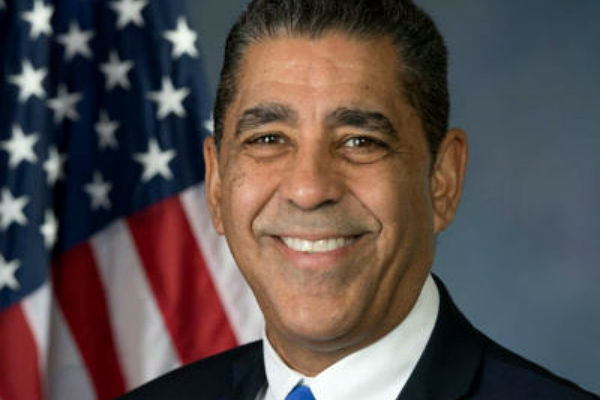 By Harlem Rep. Adriano Espaillat
By Harlem Rep. Adriano Espaillat
For more than four months, my colleagues and I have focused our efforts to address the ongoing needs of Americans during the COVID-19 pandemic.
We have been successful in providing much-needed relief through the Coronavirus Aid, Relief and Economic Security Act, and the Health and Economic Recovery Omnibus Emergency Solutions Act.
I have witnessed firsthand the disproportionate impact the pandemic is having on lower-income and minority communities like New York’s 13th congressional district. My constituents deserve high-quality healthcare, and their providers — community-based primary care and independent physicians — want to safely and appropriately treat them as cities and localities around New York state begin to reopen.
For this reason, I have requested that any forthcoming COVID-19 relief package prioritize direct financial support to community-based primary care physicians, independent physicians, and independent physician association groups to purchase and receive reimbursement for personal protective equipment (PPE).
This is particularly important for healthcare providers in low-income communities, where many patients are Medicaid beneficiaries.
We know that PPE is a vital necessity for the safety of patients and healthcare providers, not only responding to the COVID-19 but also those who are reopening and seeing patients for routine and non-COVID visits. This is particularly important for healthcare providers in low-income communities, where many patients are Medicaid beneficiaries.
While the threat and dangers of COVID-19 have not fully abated, some areas are slowly reopening under the guidance and instruction of social distancing and use of PPE. Many healthcare professionals I have spoken with agree wholeheartedly that PPE and other upgrades to office infrastructure and organization are necessary for the health and safety of their patients and staff, as well as for the greater public health.
As doctors begin to see more in-person patients, it is critical they take the precautions necessary to minimize the spread of COVID-19.
This includes acquiring N95 surgical masks, N95 respirators, mechanical ventilators, protective eyewear goggles, face shields, disposable gloves, hand sanitizer, protective gowns, alcohol wipes, disinfectant spray, disinfectant wipes, and commercial-grade high-efficiency particulate air filters to augment existing ventilation systems to care for COVID-19 patients. It also may require other changes in their office’s construction to ensure proper social distancing.
Due to the current climate, many healthcare professionals are rightly concerned about the cost associated with purchasing the required PPE and making other changes to their offices. As the early days of this pandemic made clear, the demand for expensive and often single-use PPE will create a new cost barrier to care in low-income communities.
For practices whose patients are primarily Medicaid beneficiaries, the cost of PPE, coupled with the reimbursement for care, may not be enough to sustain their reopening, meaning some of our most at-risk communities will not receive the care they need.
For practices whose patients are primarily Medicaid beneficiaries, the cost of PPE, coupled with the reimbursement for care, may not be enough to sustain their reopening, meaning some of our most at-risk communities will not receive the care they need.
While the Centers for Medicare & Medicaid Services allows states to increase their reimbursement to Medicaid and CHIP providers to include the cost of PPE, many states are facing such difficult fiscal conditions that their budgets may not permit for such increases.
This is why I am asking that the next COVID-19 supplemental include money specifically for the purchase and reimbursement of PPE — including retroactive reimbursement — to community-based independent primary care and small independent physician groups that treat low-income and Medicaid-eligible patients.
The COVID-19 response is leaving behind our most vulnerable populations: specifically, communities of color, seniors, those with limited mobility, and immigrants. We must act now to protect the New Yorkers most at risk during this crisis.
Many of our local city and state healthcare providers are ready to reopen and see their patients but face a cost barrier that disproportionately impacts low-income communities and communities of color.
Many of our local city and state healthcare providers are ready to reopen and see their patients but face a cost barrier that disproportionately impacts low-income communities and communities of color. Providing this dedicated funding stream for PPE will be a key step as we safely navigate reopening our communities.
Become a Harlem Insider!
By submitting this form, you are consenting to receive marketing emails from: . You can revoke your consent to receive emails at any time by using the SafeUnsubscribe® link, found at the bottom of every email. Emails are serviced by Constant Contact








